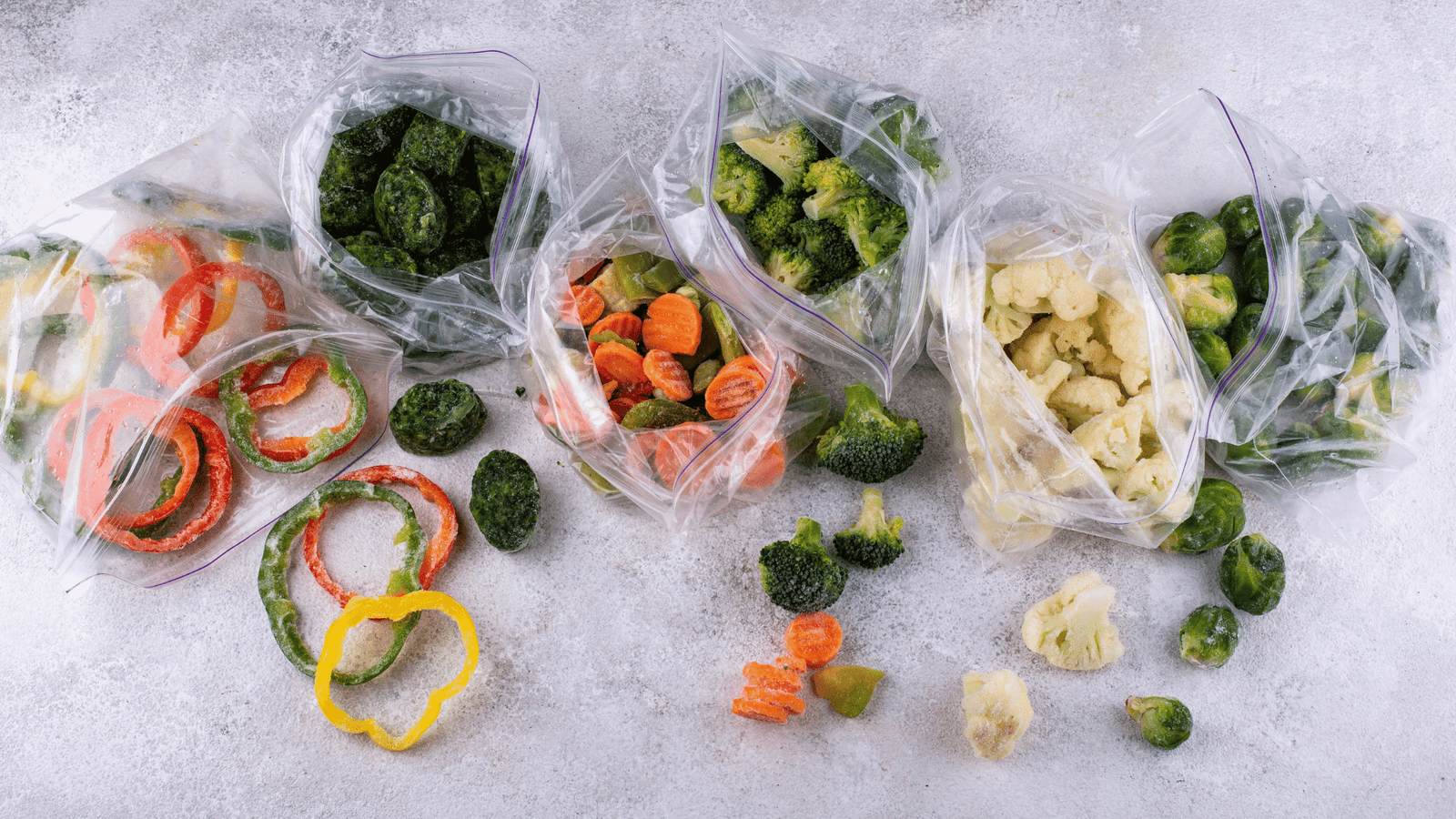Seasonal Eating – Eat Local – Save The Planet
Seasonal eating refers to the practice of consuming fruits and vegetables that are harvested at their peak during specific times of the year. This approach promotes a diet aligned with the natural growing cycles of various regions, making it an eco-friendly alternative to the consumption of imported produce. Choosing local and seasonal produce has gained attention for its multiple benefits to the environment and the community.
The significance of seasonal produce lies in its alignment with nature’s timing, offering enhanced flavors and nutritional value. By supporting local farmers and reducing the dependency on long-distance transportation, consuming seasonal foods helps to significantly decrease carbon emissions. On average, food in the United States travels about 1,500 miles from farm to table, contributing to the carbon footprint. Contrarily, local produce requires fewer transportation resources, resulting in reduced greenhouse gas emissions.
Moreover, supporting local agriculture bolsters local economies by keeping money within the community. When consumers purchase produce from local farmers, those funds are reinvested into local businesses and services, fostering economic stability and growth. Not only does this benefit individual growers, but it also strengthens the overall agricultural landscape in the region.
Interestingly, studies indicate that eating locally grown, seasonal produce can save the equivalent of up to 15% of energy used in the traditional food system. According to research, embracing seasonal eating could reduce yearly carbon emissions related to food production and transport by an estimated 10-15%. These figures highlight the environmental impact of seasonal eating and emphasize its significance in mitigating climate change.
In today’s context, where climate change and sustainability are urgent concerns, the relevance of promoting seasonal and local eating habits cannot be overstated. The choices individuals make about their daily diet can collectively make a significant difference in creating a more sustainable and environmentally friendly food system. As we delve further into the benefits and practices of seasonal eating, it becomes evident how this method can contribute to a healthier planet and a stronger local economy.
Benefits of Seasonal Produce for Health and Environment
Incorporating seasonal produce into your diet offers numerous health benefits, including higher nutritional content and superior taste. Fruits and vegetables harvested at their peak are richer in vitamins, minerals, and antioxidants, which means they contribute more effectively to overall health. For instance, a study by the International Journal of Food Sciences and Nutrition found that broccoli harvested during its natural season contained almost double the vitamin C compared to out-of-season broccoli stored for several months.
Seasonal foods are typically fresher and require fewer preservatives and chemicals to maintain their quality. This reduced need for artificial preservation translates to fewer additives in your meals, leading to better digestive health and lower risk of exposure to potentially harmful substances. Moreover, the superior taste of seasonal produce encourages healthier eating habits, making it easier to consume more fruits and vegetables daily.
The environmental benefits are equally significant. Seasonal produce generally requires minimal transportation, cutting down on the journey from farm to table. This reduction in transportation not only ensures freshness but also lowers greenhouse gas emissions due to decreased fuel consumption. Furthermore, there is less need for energy-intensive refrigeration and storage when we prioritize seasonal fruits and vegetables.
Supporting local farmers’ markets or participating in Community Supported Agriculture (CSA) programs is a practical way to access seasonal produce. By doing so, you can enjoy fresher, more nutritious food while also reducing your ecological footprint. According to the U.S. Department of Agriculture, farmer’s markets can mean up to 90% fewer emissions compared to conventional food systems, highlighting the environmental benefits of these programs.
In sum, eating seasonal produce provides a dual advantage—boosting your health while significantly benefiting the planet. Transitioning to a diet rich in seasonal fruits and vegetables is a simple yet powerful step towards a more sustainable lifestyle.
FAQs about Eating Local and Seasonal Produce
What are the benefits of eating seasonal produce?
Eating seasonal produce offers numerous benefits. Freshly harvested fruits and vegetables retain more nutrients compared to those that are stored for long periods. Seasonal produce often tastes better and is more flavorful. Additionally, consuming in-season items usually supports local farmers, reduces carbon footprints, and promotes sustainable farming practices.
Is it more expensive to eat local?
While it might seem that eating local is pricier, it often isn’t. In-season produce tends to be more abundant and, therefore, cheaper. Farmers markets and local co-ops often offer competitive prices and discounts, making it easier on the wallet. Furthermore, buying local reduces transport costs embedded in supermarket prices, making local produce a cost-effective choice in the long run.
How can I find out what’s in season?
Determining what’s in season is quite straightforward. Many local farmers markets highlight seasonal produce. Additionally, numerous websites and apps provide seasonal food guides based on your specific geographical area. Consulting these resources can help you make informed purchasing decisions and plan nutritious meals accordingly.
What if I live in an area with limited growing seasons?
Regions with limited growing seasons can still benefit from eating local. Consider utilizing preservation methods such as canning, freezing, or fermenting to enjoy local produce year-round. Community Supported Agriculture (CSA) programs also offer a variety of produce and educate members on seasonal eating. Indoor gardening or hydroponic farming can also be viable options.
Can eating local really make a difference?
Yes, eating local can significantly impact the environment and local community. Reducing the distance food travels decreases carbon emissions and energy consumption. Supporting local farms helps sustain the agricultural economy and ensures farmers receive fair compensation. Consumer demand for local, seasonal produce can also encourage sustainable practices across the food industry.
How can I start incorporating seasonal foods into my diet?
Incorporating seasonal foods into your diet can start with small steps. Begin by visiting local farmers markets and exploring the offerings. Experiment with recipes that highlight in-season produce, such as seasonal vegetable soups or fruit salads. Joining a CSA can provide a regular supply of fresh, local produce, introducing variety and improving your overall eating habits naturally.
Overcoming Common Obstacles and Practical Tips
While the concept of eating seasonal produce promises a plethora of environmental and health benefits, certain challenges can make the transition seem daunting for some. Limited availability of fresh, local produce in certain areas can be a significant concern, especially for those living in urban environments or regions with shorter growing seasons. Additionally, the perception of higher costs associated with purchasing organic, local produce can deter budget-conscious shoppers. However, there are several practical strategies to help overcome these obstacles and seamlessly incorporate seasonal produce into your diet.
One effective solution to address limited availability is to explore local farmers’ markets and join Community Supported Agriculture (CSA) programs. Farmers’ markets offer a variety of fresh, seasonal produce directly from local growers, often at competitive prices. CSAs provide a subscription-based model where consumers receive a regular box of fresh produce, which not only supports local farmers but also ensures a steady supply of seasonal fruits and vegetables. For those who may not have access to farmers’ markets or CSAs, many grocery stores now highlight local and seasonal produce, making it easier to identify and purchase.
Cost concerns can often be managed through smart budgeting and proper storage techniques. Bulk buying of seasonal items when they are plentiful and cheaper, followed by preservation methods like freezing, can help in reducing overall costs. Products like food preservation gadgets from Amazon can extend the shelf-life of produce, allowing you to enjoy seasonal items throughout the year. Investing in resources like seasonal cookbooks can also provide valuable guidance on maximizing the use of seasonal ingredients, reducing food waste, and planning cost-effective meals.
Growing your own produce is another viable option, even if you have limited space. Container gardening or joining community gardens can provide more control over what you grow and when. Gardening starter kits available on Amazon can help beginners get started with essential tools and resources. This not only saves money but also offers the satisfaction of harvesting your own food.
Numerous families and individuals who have switched to seasonal eating report experiencing positive changes. They often notice improved taste and freshness in their meals, feel a deeper connection to their food sources, and observe health benefits from consuming a variety of nutritious produce. Sharing these success stories can be a powerful motivator for others to take the plunge.
In conclusion, while challenges exist, the benefits of eating seasonal produce far outweigh the obstacles. By employing practical strategies, utilizing available resources, and drawing inspiration from those who have successfully made the transition, you can take meaningful steps towards eating local and seasonal. Start today and contribute to a healthier lifestyle and a more sustainable planet.
ⓘ Disclaimer:
Please note that the information provided in this blog post is for general informational purposes only and does not constitute professional advice. The author of this article is not an expert. It is important to consult with a qualified professional. The content of this blog post is based on the author’s personal experiences, research, and opinions. SmoothiePerks.com nor the author assumes no responsibility or liability for any consequences resulting from the use of this information. By reading this blog post, you acknowledge and accept that the information provided here is not a substitute for professional advice.
ⓘ Disclosure
Amazon Associates Program: smoothieperks.com is a participant in the Amazon Services LLC Associates Program, an affiliate advertising program designed to provide a means for sites to earn fees by advertising and linking to Amazon.com.
ⓘ Affiliate Disclaimer/Disclosure:
Please assume any links to 3rd party products are affiliate links for which I may receive a small payment from the vendor if you decide to sign up or purchase – at no cost to you.




